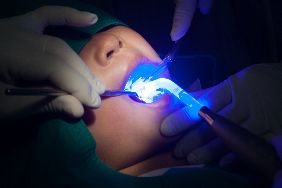 You may not have thought about it in these terms, but your child’s permanent teeth have to last them for 90-100 years. That’s a long time! The best way to make sure their teeth stay healthy is to establish good hygiene habits early and bring them in for preventative children’s dentistry in Tyler. The goal is to minimize the need for major dental work like fillings, crowns and root canals over the course of lives. One of the first recommendations is applying sealants to prevent cavities from occurring on the back teeth. Sealants are simple but very effective – and well worth the small investment of time and money now to prevent much bigger problems later! Keep reading to learn more about what sealants are and why they’re so important to your child’s dental health.
You may not have thought about it in these terms, but your child’s permanent teeth have to last them for 90-100 years. That’s a long time! The best way to make sure their teeth stay healthy is to establish good hygiene habits early and bring them in for preventative children’s dentistry in Tyler. The goal is to minimize the need for major dental work like fillings, crowns and root canals over the course of lives. One of the first recommendations is applying sealants to prevent cavities from occurring on the back teeth. Sealants are simple but very effective – and well worth the small investment of time and money now to prevent much bigger problems later! Keep reading to learn more about what sealants are and why they’re so important to your child’s dental health.
What Are Dental Sealants?
Sealants are thin, hard, tooth-colored coatings that cover the chewing surfaces of the back teeth. If you used a microscope to look at these surfaces, you would see a lot of pits and grooves that are impossible to keep clean, even with good brushing.
Since the bacteria that cause cavities are microscopic, they can easily get into these pits and grooves and cause decay. Sealants coat these surfaces and create a thin, smooth layer that prevents cavities by keeping the bacteria out.
How Are Sealants Done?
Getting sealants is much easier than getting fillings! It involves several steps:
- It’s crucial that the teeth stay dry during the procedure, so cotton rolls are placed on either side of the tooth.
- Next, a “special soap” is put on the tooth for about 15-20 seconds to thoroughly clean out the pits and grooves on the chewing surface.
- After rinsing away the soap, the tooth is dried thoroughly with air. Then the sealant is applied in a thin layer.
- Lastly, the tooth is exposed to a special light for 15-20 seconds, which hardens and bonds the sealant to its chewing surface.
When Should Sealants Be Placed?
Sealants are recommended in phases when the permanent molars come in. The first round is recommended around age 6, with a second set recommended about age 12.
Also, sealants are subject to strong chewing forces and can wear away with time (usually anywhere from 4-8 years). A dentist in Tyler will be monitoring them at routine checkups to see if they need to be replaced.
Fortunately, when sealants are placed at the right time and well-maintained, they’re very effective. The CDC estimates that they prevent 80% of cavities in school-age children, and children who don’t get sealants get 3 times as many cavities.
As always, an ounce of prevention is worth a pound of cure – especially when it comes to preventing cavities for your child!
About the Author
Dr. Donna Franklin-Pitts is a general and restorative dentist in Tyler who loves working with patients of all ages. Her gentle and reassuring chairside manner, along with years of experience, enable her to provide outstanding care to children. She always prefers to prevent problems rather than treat them, so she recommends sealants for all her pediatric patients. If you have any questions, she can be contacted via her website or at (903) 593-2330.
 Franklin
Franklin